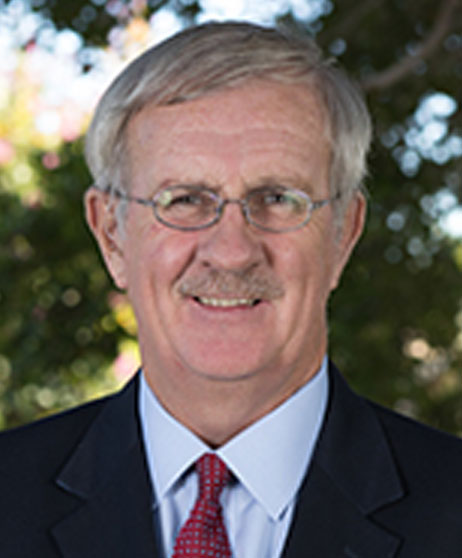Argentina: Navigating the trademark landscape following regime reforms

This is an Insight article, written by a selected partner as part of WTR's co-published content. Read more on Insight
In summary
The article analyses recent reforms to the trademark registration procedure, which were intended to speed the process up. However, the reforms have not necessarily been the improvement that many had hoped for.
Discussion points
- Argentine Trademark Office as a decision maker
- Sample of cases reviewed
Referenced in this article
- Law No. 27,444
- Resolution P-183/2018 and Resolution 279/2019 of Law No. 27,444
- Paris Convention
The transformation of Argentina’s industrial property rights system, particularly the trademark registration process, marked a significant shift from traditional practices. The enactment of Law No. 27,444 in 2018 brought about a series of reforms aimed at modernising and streamlining the administrative procedures for trademarks, patents, and industrial models and designs. These reforms were part of a broader government initiative to reduce bureaucracy and enhance the efficiency of administrative processes, including those related to industrial property rights.
The amendments introduced several key changes to the trademark registration process. The most notable among these were the modifications to the opposition procedure, opposition actions, cancellation actions and non-use cancellation actions. The new framework was designed to expedite these processes, which had previously been mired in lengthy court proceedings.
Prior to the reforms, any claims for the withdrawal of an opposition, cancellation of a trademark or cancellation due to lack of use had to be filed and prosecuted in a federal court. This was a century-old practice that often resulted in protracted legal battles, with decisions from the court of first instance taking anywhere from four to six years. For trademark owners, this delay could mean receiving a favourable decision long after the trademark had lost its market relevance or after suffering damages from imitators.
The rationale behind these procedural changes was to provide a more pragmatic approach to resolving trademark disputes. By moving away from the courts and towards administrative avenues, the goal was to achieve quicker resolutions and cost-effective outcomes. Proponents of the changes argued that this would benefit trademark owners by reducing the time and resources spent on litigation.
Despite the intentions behind the reforms, their practical impact on trademark claimants has been mixed. The anticipated benefits of shorter proceedings and more efficient tools have not been fully realised. In reviewing decisions issued by the Argentine Trademark Office (Argentine TMO) post-reform, it becomes evident that the shift in venue and decision maker has not necessarily translated into the expected improvements.
As we continue to assess the outcomes of these changes, it is crucial to consider the experiences of trademark claimants and the performance of the Argentine TMO. The ongoing evaluation of the reformed system will determine whether further adjustments are necessary to fulfil the original objectives of the 2018 legislation. The future of Argentina’s trademark registration process hinges on the ability to adapt and refine the procedures to meet the needs of rights holders effectively.
Review of the Argentine TMO’s decisions since the regime change reveals a complex landscape of reform and adaptation. While the intent to streamline and de-bureaucratise the process is clear, the practical implications for trademark claimants are still unfolding. It is essential to monitor these developments closely to ensure that the system serves the interests of all parties involved in the protection of industrial property rights in Argentina. The journey towards a more efficient and responsive trademark registration process continues, with lessons learned and insights gained along the way.
Argentine TMO as a decision maker
The enactment of Law No. 27,444 in Argentina marked a pivotal moment for the country’s trademark law, necessitating a series of new resolutions from the Argentine TMO to implement the revised procedures. Among these, Resolution P-183/2018 and Resolution 279/2019 were particularly significant, as they outlined the processes for opposition and cancellation due to non-use or nullity of trademarks, respectively. These resolutions designated the National Trademarks Office as the authority responsible for issuing first instance resolutions.
This shift from judicial to administrative decision-making sparked considerable debate among legal scholars and IP professionals. The judiciary’s extensive history of critical decisions on trademark confusion left many wondering if the Argentine TMO was equipped to uphold and be bound by such precedents. The concern centred around the principles established by Argentine courts over many years, addressing issues such as trademark notoriety, de facto trademarks, pirate trademarks, foreign trademarks, medical product trademarks and the concept of legitimate interest.
Despite these concerns, the Argentine TMO, during the transition period, engaged in numerous discussions with professionals to reassure them that the new regime would not disregard the precedents set by federal courts. Instead, these precedents would serve as the foundation for analysing trademark cases under the TMO’s jurisdiction.
A particularly contentious issue arising from the procedural changes was the handling of evidence. Questions arose regarding the TMO’s capacity to produce evidence proposed by the parties and the extent to which parties could introduce new evidence at later stages of the proceedings. In response, the TMO clarified that the National Trademarks Bureau would assess the admissibility, necessity and value of the evidence presented by the parties, exercising discretionary power to accept or reject it without the possibility of appeal.
The transition to the new system has not been without challenges. As the TMO continues to issue decisions under the new regime, it is becoming increasingly clear that the success of the reforms depends on the TMO’s capacity to balance the need for efficiency with the preservation of legal principles and fairness in trademark disputes.
Looking ahead, the Argentine TMO faces the task of refining its approach to align with the objectives of Law No. 27,444. The ongoing dialogue between the TMO and IP professionals will be crucial in shaping a trademark law framework that is both modern and respectful of established legal traditions. As Argentina continues to navigate these changes, the global IP community watches with interest, recognising the country’s efforts to streamline its trademark law while grappling with the complexities of legal reform.
In conclusion, the Argentine TMO’s journey post-Law No. 27,444 is a testament to the intricate process of legal evolution. The resolutions issued to implement the new procedures represent a significant departure from the past. As the TMO forges ahead, it must do so with an eye towards maintaining the delicate balance between efficiency and legal integrity, ensuring that Argentina’s trademark law serves the needs of all rights holders in the IP ecosystem. The path forward is one of cautious optimism, as the TMO endeavours to honour the spirit of the law while navigating the practical realities of its application.
Sample of cases reviewed
In the five years since the implementation of new trademark regulations, a critical analysis of the resolutions issued by the TMO reveals a pattern of adherence to certain judicial principles, while others remain underdeveloped. The Supreme Court of Justice’s rulings have set a precedent that the deciding authority need not address every argument presented, but rather those pertinent to the case’s resolution. This selective consideration of arguments is evident in the TMO’s approach to opposition procedures, where the focus is primarily on the potential confusion and similarity between the contested trademarks, in some cases to the expense of other relevant factors such as trademark notoriety, medical product coverage, or related goods and services.
The TMO’s handling of cancellation actions further illustrates this selective reasoning. Copycat applications are routinely rejected, yet the examiners seldom explicitly label the contested trademarks as pirated. Instead, the emphasis is placed on the identical nature of the applied-for trademark to a previously registered one. This raises questions about the TMO’s future approach to unregistered well-known or notorious trademarks and the application of the Paris Convention in such scenarios.
Moreover, in cancellation actions due to non-use, the TMO has consistently relied on specific statements to resolve cases. These statements often revolve around the trademark’s lack of use within the prescribed period, disregarding other substantive arguments that might be presented by the parties involved. This narrow focus on use-related criteria reflects a cautious and conservative approach by the TMO, potentially overlooking the multifaceted nature of trademark disputes.
The TMO’s methodology, while efficient in certain respects, may not fully capture the complexities of trademark law. For instance, the notoriety of a trademark can significantly impact its distinctiveness and the likelihood of confusion – a factor that should not be overlooked in opposition proceedings. Similarly, trademarks associated with medical products warrant a more nuanced analysis due to the potential implications for public health and safety. The relationship between trademarks and related products or services also merits consideration, as it can affect the scope of protection and the risk of market dilution.
The TMO’s reluctance to delve into these aspects suggests a preference for a more formulaic approach to decision-making. While this may streamline the process and provide clear-cut resolutions, it also risks oversimplifying complex legal matters and failing to address the broader context of each case. As the TMO continues to evolve, it will be essential to balance the need for procedural efficiency with the imperative to provide comprehensive and fair judgments that reflect the full spectrum of trademark law.
The past five years have seen the TMO make strides in certain areas, yet there remains room for growth and refinement. The adoption of a more holistic approach to trademark examination and dispute resolution could enhance the robustness of the TMO’s decisions, ensuring that all relevant factors are given due consideration. As trademark law continues to adapt to the changing landscape of commerce and intellectual property, the TMO’s practices will undoubtedly come under greater scrutiny, prompting further development and, hopefully, a more inclusive application of the law.
The TMO’s approach to cancellation actions for lack of use has been characterised by a reliance on certain established statements, which has led to a pattern of decision-making that prioritises procedural technicalities over substantive examination. This approach is evident in cases where the TMO has rejected cancellation actions on the grounds that the subjective rights of the applicant have not been adversely affected, in cases where no opposition was filed against similar trademark applications. Furthermore, the TMO has claimed to conduct searches to verify the use of contested trademarks, yet it has not provided evidence of such searches, raising questions about the burden of proof and the TMO’s role in evidencing use.
The TMO’s reasoning in cancellation actions, particularly in Argentina, reveals a strict adherence to formal requirements for trademark renewal. The necessity for a sworn declaration of use, without the need to submit actual evidence, places the onus on the trademark owner to truthfully declare the use of their trademark. However, when claimants challenge the veracity of these declarations, the TMO defers to other institutions, such as the federal courts, to determine the truthfulness of the documents, thereby prolonging the resolution process.
This procedural stance taken by the TMO has significant implications for the trademark cancellation process. It suggests that the TMO is not equipped to investigate the authenticity of use declarations, effectively shifting the responsibility to the claimant and the courts. As a result, claimants face a lengthy and potentially burdensome process to challenge the validity of a trademark based on the accuracy of use declarations.
The TMO’s preference for informative evidence over substantial proof of use or recognition further complicates the matter. By accepting primarily informative evidence, the TMO may inadvertently exclude crucial evidence that could influence the outcome of a case. This practice underscores the importance of presenting comprehensive evidence during the initial proceedings, as it may serve as a foundation for further legal action should the case be appealed to the federal courts.
In light of these observations, it becomes apparent that the new procedures have not necessarily streamlined the resolution process for claimants. Instead, they have introduced a level of complexity that requires claimants to navigate both administrative and judicial avenues to achieve a resolution. The TMO’s current methodology, while perhaps efficient in certain respects, does not fully address the intricacies of trademark law and the need for a thorough examination of all relevant factors.
As the TMO continues to refine its processes, it will be crucial to consider the balance between procedural efficiency and the substantive rights of the parties involved. A more nuanced approach that takes into account the full spectrum of evidence, including the notoriety of trademarks and the relationship between related products or services, could lead to more equitable and just outcomes. Ultimately, the evolution of the TMO’s practices will play a pivotal role in shaping the landscape of trademark law and ensuring that the rights of trademark owners and claimants are adequately protected.
Conclusions
Processes strive to align with the updated framework. The recent summary of cases under the revised Trademark Law reveals that the transition is still underway, with several critical aspects requiring further contemplation.
The intent behind the new regulation was to introduce a more agile and expedient pathway for resolving trademark disputes, thereby simplifying the claims process. However, the journey towards fully realising the established principles in case resolution reasoning appears to be ongoing. The resolutions thus far have illuminated the need for trademark professionals to explore alternative strategies to reach satisfactory outcomes. This may include, in some instances, resorting to the judicial system for certain claims, despite the prospect of extended durations to reach a conclusion.
The TMO’s current approach, while streamlined in certain respects, has not yet achieved the anticipated level of flexibility and speed in decision-making. The principles that underpin the reasoning in case resolutions remain only partially integrated into the TMO’s practices. As a result, professionals in the field are prompted to consider innovative methods to navigate the legal landscape effectively.
One such method may involve a more proactive engagement with the courts. While this approach may extend the timeline for resolving claims, it also opens the door to a more thorough examination of the issues at hand. The courts’ involvement can provide a more comprehensive adjudication process, potentially leading to more nuanced and equitable decisions.
Moreover, the TMO’s focus on procedural aspects over substantive examination has highlighted the importance of a balanced approach that considers both the letter and the spirit of the law. Its reluctance to delve into the veracity of use declarations, for instance, underscores the need for a mechanism that can adequately assess the authenticity of such claims.
In conclusion, the evolution of trademark law and the TMO’s practices is an ongoing process. The new regulation has set the stage for change, but the full integration of its principles into the TMO’s decision-making process is a work in progress. As the legal community continues to adapt, the pursuit of alternative avenues for claim resolution, including judicial intervention, may become increasingly prevalent. The ultimate goal remains clear: to establish a legal framework that is both efficient and just, capable of upholding the integrity of trademark law and protecting the interests of all parties involved.
In the broader context, the TMO’s journey reflects the challenges inherent in legal reform. The transition from old to new, from established to innovative, requires patience, persistence and a willingness to embrace change. As the TMO navigates this path, the lessons learned will undoubtedly contribute to the refinement of trademark practices and the pursuit of justice within the IP domain. The road ahead may be long, but it is paved with the promise of progress and the potential for a more responsive and effective legal system.

